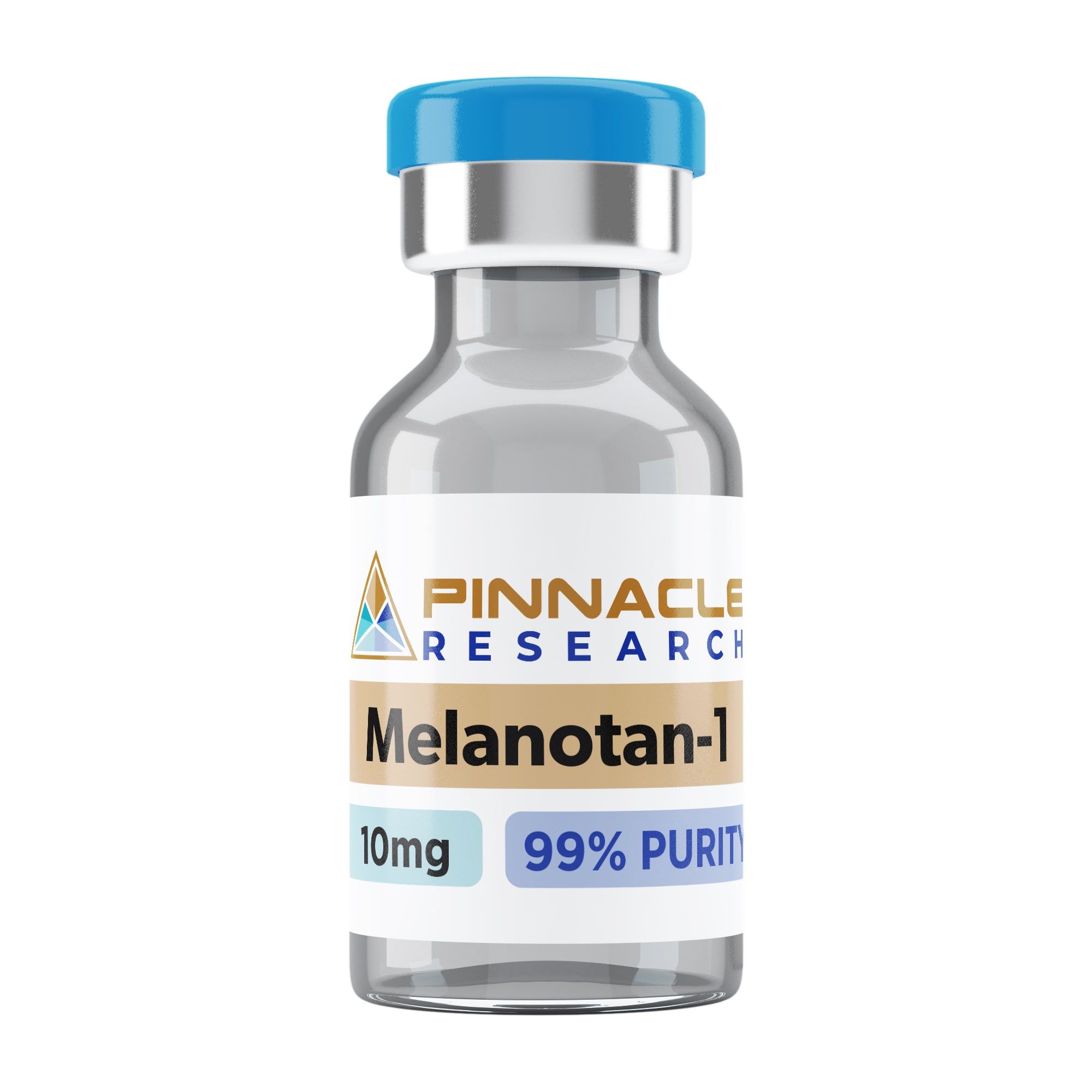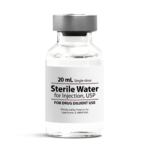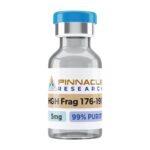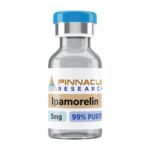About Melanotan-1
The Melanotan-1 peptide is similar to the naturally occurring alpha-MSH (Melanotan 2), an alpha-melanocyte-stimulating hormone. Melanotan 2 has impressive effects on the melanocyte cells, the hair, and skin cells responsible for pigmentation. Additionally, it has a strong binding factor to the melanocortin receptor 1. It is a non-selective full agonist of various melanocortin receptors. The Melanotan-1 peptide differs from Melanotan 2 due to the presence of a single amino acid in its structure. It was initially developed to function as a sunless tanning agent. There have been more research studies that have revealed more health benefits associated with the peptide.
What Is Melanotan 1?
The Melanotan-1 peptide is an artificial analog of the alpha-melanotocyte-stimulating hormone. The stimulating hormone is primarily used to prevent sun-related skin damage, especially in people with erythropoietic protoporphyria. It was initially developed to act as a sunless tanning agent before further research discovered additional physiologic effects on feeding behavior, blood pressure, and central nervous system functionality. Melanotan-1 is in its third phase of clinical trials, focusing on using it as a treatment option for polymorphous light eruption. It’s also in its second phase of clinical trials in treating actinic keratosis, a specific skin damage caused by the sun.
Melanotan 1 Chemical Structure
- Sequence: Ser-Tyr-Ser-Nle-Glu-His-D-Phe-Arg-Trp-Gly-Lys-Pro-Val
- Molecular Formula: C78H111N21O19
- Molecular Weight: 1646.874 g/mol
- Synonyms: Afamelanotide, Scenesse, CUV1657, MT-1
The Functionality of Melanotan-1
Melanotan-1 has plenty of similarities to the alpha-melanocyte stimulating hormone that naturally occurs in the body and is predominantly known for its effects on melanocyte cells. The function of the alpha-MSH is mediated through the strong binding capability of the hormone to melanocortin receptor 1. The alpha-melanocyte stimulating hormone is a potent non-selective full agonist of various melanin receptors, namely melanin receptors 1, 3, 4, and 5.
Unlike the naturally occurring alpha-MSH, the Melanotan-1 peptide was developed to act as a sunless tanning agent before scientists found the peptide had additional effects on the body apart from pigmentation. The compound was discovered to cause increased sexual arousal, altered baseline metabolism, and boosted appetite. Further studies into melanocortin-binding proteins and the Melanotan-1 peptide provided a deeper insight into how the melanocortin signaling system functions.
Melanotan 1 Research and Effects
Designed for Sunless Tanning
The original objective of developing Melanotan 1 was to aid in dealing with tanning problems. Melanotan 1 has undergone various research studies and is currently in the 1st phase of clinical trials and studies, which focus on studying the peptide in individuals exposed to ultraviolet radiation. Findings from the study revealed that individuals who were administered Melanotan 1 were 75% more likely to get a good tan and 47% less likely to suffer sunburns. Compared to the control group, subjects using Melanotan 1 required 50% less exposure to UV to achieve the same amount of tanning. Scientists suspect that Melanotan 1can effectively boost tanning when subjects are exposed to high UV settings, which protects the skin from prolonged exposure to the sun and possible sunburn. The discovery can help create a viable tanning product for individuals who suffer from poor-tanning skin type conditions.
Blood Pressure
According to research studies on hypertensive mice, Melanotan 1 can offer protection against high blood pressure to animals with normal blood pressure without affecting their health. The discovery is significant because current medication and treatment therapies for blood pressure cause hypotension. Hypotension can lead to various health complications like stroke, heart attack, loss of consciousness, and many more. Medical data shows that elderly patients are more prone to the side effects of blood pressure medications due to their labile physiology. Melanotan 1 can effectively regulate high blood pressure without causing significant side effects, making it a more reliable and potent alternative to the current high blood pressure medication.
Cognitive Decline and Alzheimer’s disease,
Research studies on transgenic mice show that Melanotan 1 can protect the brain from certain conditions that can cause cognitive decline and Alzheimer’s disease. The mouse model of moderate Alzheimer’s disease was used in the study and revealed that even in small doses, the Melanotan 1 peptide could substantially reduce the levels of amyloid beta plaques. It can also improve the clinical measures of the brain’s cognitive function and laboratory measures of synaptic transmissions and protect neurons from death. During the same study, inhibiting Melanotan 1’s effects at the MC4 receptor blocked all the favorable effects of the peptide.
Other studies on Melanotan 1 on the MC4 receptor have revealed that the MC4 receptor stimulation enhances neurogenesis and faster AD cognitive recovery. Daily administration of the Melanotan 1 peptide caused a reduction in the D-related biomarkers, confirming that Melanotan 1 works in multiple pathophysiological pathways.
Functional Recovery after a Stroke
Following a Melanotan 1 treatment, the biomarkers in AD experience substantial improvement. Research studies on gerbil models using Melanotan 1 treatment on nanomolar doses revealed the peptide has various key health benefits. The gerbil models had undergone a stroke lasting ten minutes. Essential health benefits observed in the study caused by the Melanotan 1 treatment were:
- Reduce brain damage
- Reduce neuron death
- Improve recovery of learning and memory
The benefits can be achieved even when Melanotan 1 is administered nine hours after the stroke. Scientists believe Melanotan 1 activates repair mechanisms, improving synaptic plasticity and long-lasting functional recovery. It allows the brain to reroute memory and learning to healthier areas effectively. The lynchpin of this process is the overexpression of the Zif268 gene.
Improves Heart and Circulation
Melanotan 1 continues to be of interest in improving overall cardiovascular health. During research studies on rats that had suffered a heart attack, researchers observed that Melanotan 1 treatment and other melanocortins improved overall heart health. The peptide and other melanocortins improved circulatory parameters and reduced heart injury. Melanotan 1 was administered during CPR and, combined with epinephrine, effectively restored the heart rate and baseline arterial pressure. It additionally reduced inflammatory markers, enhanced expression of cardiac gene functions, and reversed metabolic acidosis. At the end of the study, it was noted that the treatment therapy had an 81% survival rate.
Neuroinflammatory Disease
Many research studies back up the imperative functionality of Melanotan 1 in the pigmentation of the skin and hair. More studies have revealed that the peptide has other functions apart from pigmentation. Recent studies on mice have revealed that Melanotan 1triggered efficient mediation of the central nervous system inflammation. For instance, in multiple sclerosis, the helper T cells facilitate the loss of myelin in neurons, causing neuron dysfunction and sometimes death. Melanotan 1 was administered in mice and inhibited the process, preventing the loss of myelin and ultimately protecting the neurons from damage. Researchers also observed administration of Melanotan 1 improved myelin recovery and established enhanced neuron signaling. The same results were observed when the peptide was administered to mice with uveitis, an eye inflammatory disorder.
Investigated in Body Fat Loss Trials
Melanotan 1 affects several melanocortin receptors in the body, like the MC5 receptor. When the MC5 receptor is stimulated, it shifts the fat cells from the storage to the fat-burning section and also triggers the oxidation of the fatty acids. The findings from the study revealed that the fat-burning process triggered by melanocortin stimulation involves several pathways and receptors. The discovery has intrigued many researchers who want to study deeper on the subject and discover how they can achieve alteration of fatty acid metabolism. Medics can use this to achieve body fat loss for individuals unable to engage in physical workouts because of injury, morbid obesity, or disability.
Melanotan 1 is one of the most promising peptides in the market. It is backed by plenty of research studies that show the excellent health benefits it has apart from just enhancing pigmentation. Scientists are still conducting more research studies to determine the full potential of the peptide. Meanwhile, the peptide can achieve a faster tanning process and reduce exposure to ultraviolet radiation.
Even though it was initially developed to help in tanning and reduce exposure to the sun’s ultraviolet radiation Melanotan 1 has turned out to be a very useful peptide. Read more on the latest scientific discoveries and uses of the peptide.




